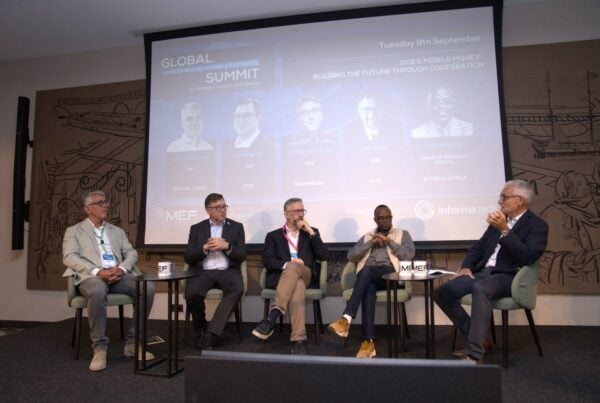Apple’s “Tap to Pay on iPhone” is transforming how businesses worldwide accept payments. With the latest May announcement more countries can turn compatible iPhones into secure contactless payment terminals, eliminating the need for extra hardware. With widespread global adoption, Apple and Android are empowering merchants, enhancing security, and streamlining transactions, making mobile payments more accessible and efficient for businesses of all sizes.
Apple’s “Tap to Pay on iPhone” feature is rapidly expanding worldwide. Using an iPhone as a credit card payment machine is currently supported in 34 countries. With the most recent expansion, announced on May 27, 2025, brought Tap to Pay to eight new European countries:

- Belgium
- Croatia
- Cyprus
- Denmark
- Greece
- Iceland
- Luxembourg
- Malta
This expansion significantly increased its reach across Europe, following a previous major rollout in March to countries like Bulgaria, Finland, Hungary, Liechtenstein, Poland, Portugal, Slovakia, Slovenia, and Switzerland. Apple has partnered with a range of payment platforms and banks in each country, such as Adyen, Stripe, SumUp, Revolut, and Worldline, making the service accessible to a wide variety of merchants and professionals. The feature is now widely available in Europe – the UK, France, Germany, Italy, the Netherlands, Portugal, Spain and Switzerland are also included.
Meanwhile, digital identity and authentication providers—another key MEF constituency—are positioned to play a crucial role in supporting secure, frictionless transactions, especially as biometric and token-based authentication become more prevalent.“
Smartphones as credit card readers
The wider acceptance of smartphone as credit card payment is transforming how businesses—especially small and mobile merchants—accept payments. First launched in the United States in February 2022, Tap to Pay allows any compatible iPhone (XS or newer) to function as a contactless payment terminal. This means merchants can accept payments from contactless credit and debit cards, Apple Pay, Google Pay, Samsung Pay, and other digital wallets, all without the need for additional hardware or traditional card readers.
Transactions are completed simply by having the customer tap their card or device on the merchant’s iPhone, with all data encrypted and processed securely using Apple’s Secure Element technology. Apple itself never sees the transaction details or card numbers, supporting Apple’s claim of privacy and security.
Much like Apple’s solution, Android tap-to-pay turns a compatible smartphone into a contactless payment terminal. Merchants simply download a supported app, register, and can then accept payments from contactless cards, mobile wallets (including Apple Pay, Google Pay, and Samsung Pay), and wearables. No additional hardware is required beyond the NFC-enabled Android device.
The Android platform supports tap-to-pay functionality through a combination of built-in NFC (Near Field Communication) hardware and a wide range of third-party and OEM-developed apps. The most prominent solutions include Google’s own Google Pay for Business, Samsung POS, and offerings from payment providers like Square, SumUp, Stripe Terminal, and SoftPOS solutions from major banks and fintech services.
How It Works
To use Tap to Pay, merchants download a partner-enabled iOS app, enter the sale amount, and present their iPhone to the customer. The customer then taps their card or device, and the transaction is confirmed with a vibration and sound. The system supports PIN entry for higher-value transactions. All transactions are encrypted, and card data is tokenized, meaning the actual card number is never shared with the merchant or stored on the device.
For added security, the app may require a PIN or biometric verification for certain transactions. Apple’s privacy-first approach ensures that neither the company nor the merchant has access to sensitive payment details.
Tap to Pay is particularly beneficial for small businesses, freelancers, and mobile professionals who want to avoid the costs and complexity of traditional POS hardware. It enables payment acceptance anywhere with mobile data or Wi-Fi, making it ideal for pop-up shops, markets, events, and on-the-go services. The feature is also being adopted by large retailers, with Apple Stores in several countries already using iPhones for direct customer payments.
A sizeable payments business by Apple
Apple is already a large player in the payment world. While we do not have specific number on Tap to Pay, we Apple shares that Apple Pay (the overall Apple services which includes Tap to Pay and user payment services) is available in over 85 countries and regions. Apple Pay generated $9.4 billion in revenue in 2025, contributing 3.4% of Apple’s total revenue – a minor but sizeable part of the business.
According to CapitalOne Research more than 624 million users worldwide as of 2025 us Apple Pay and over 574,200 companies globally accept Apple Pay, with nearly 80,140 of them being retailers. In the U.S., over 90% of retailers accept Apple Pay. In the UK, Apple Pay user penetration for in-store transactions is 63%, France 60%, Canada 57%, and the U.S. 54%. For Enlyft the global online payments market see PayPal dominate with a 47% market share, but followed by Apple Pay at 14% , Amazon art 10% and Google at 9%.
Google follows in payments
It is fair to say that Google Pay holds a smaller share of the in-store mobile wallet market compared to Apple Pay. However, the size of the business and the reach remain impressive. In the U.S., Google Pay is chosen for 4.2% of in-store mobile wallet transactions, compared to Apple Pay’s 53.7%. Google Pay is available in over 40 countries (half of Apple’s coverage) but it is supported by a wider range of Android devices and third-party payment apps.
While Google Pay’s global transaction volume is significant, it is estimated to be less than half of Apple Pay’s, with Apple Pay processing over $7.6 trillion annually and Google Pay trailing behind according to CoinLaw.
Ecosystem implications
The global rollout of Apple’s Tap to Pay on iPhone has significant implications for all stakeholders in the mobile ecosystem, many of whom are represented within the Mobile Ecosystem Forum.
For mobile network operators, the increased reliance on smartphones for payments drives demand for robust connectivity, low-latency networks, and enhanced security protocols. However, one of the main selling points of the iPhone like solution was the availability of WiFi networks connectivity, something that improved coverage and bypasses mobile operators. There could be a long term impact on IoT SIM – with SME either using the personal connections or using a WiFi centric model with no SIM identification – relying on the device/OS own security solutions.
Payment service providers and fintech companies are presented with new opportunities to integrate their platforms with Apple’s ecosystem, enabling seamless onboarding and value-added services for merchants.
For app developers, the expansion of Tap to Pay opens up new avenues for creating merchant-focused solutions, loyalty programs, and analytics tools that leverage real-time transaction data.
Device manufacturers and OEMs may feel competitive pressure to innovate, ensuring their hardware supports similar contactless payment capabilities and security standards.
Meanwhile, digital identity and authentication providers—another key MEF constituency—are positioned to play a crucial role in supporting secure, frictionless transactions, especially as biometric and token-based authentication become more prevalent.
Overall, Apple’s Tap to Pay accelerates the convergence of payments, identity, and connectivity, encouraging collaboration and innovation among MEF members and the broader mobile ecosystem.
Get involved in this evolving market
Globally, the iPhone is quickly becoming a powerful, secure, and convenient payment device for businesses of all sizes. Google and the Android ecosystem are also scaling up their businesses. With ongoing expansion and strong support from payment platforms, Tap to Pay for iOS/Android are set to play a major role in the future of digital commerce, making payments easier and more accessible for merchants and customers alike.
If you would like to stay informed, discuss the market with potential partners and support industry initiatives join MEF’s Payments & Commerce Interest Group.




